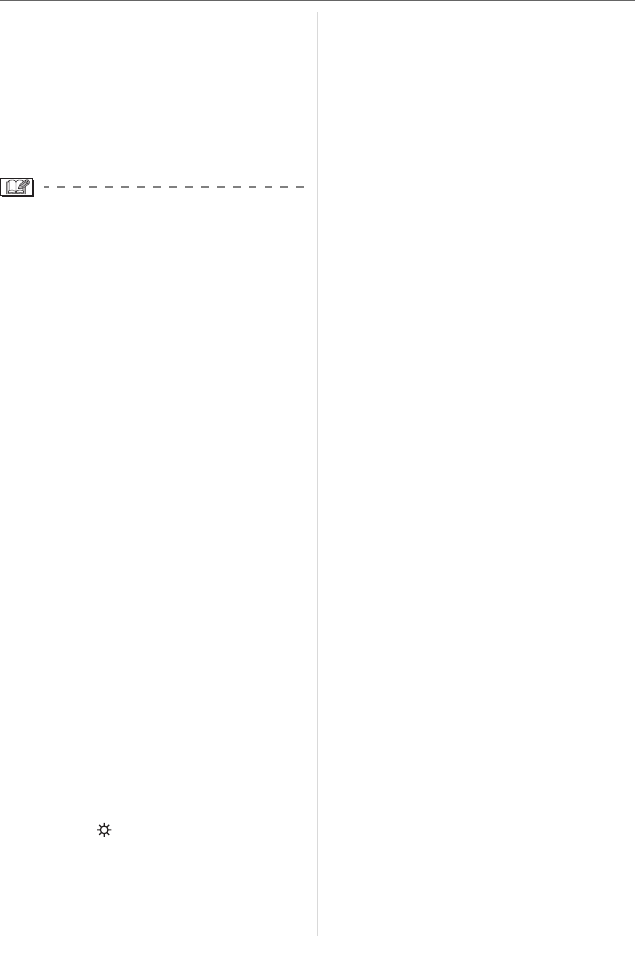
Advanced
43
VQT0V40
• There may be differences in the above
shutter speeds in scene mode.
– [NIGHT SCENERY] (P53):
8 to 1/2000th
– [FIREWORKS] (P55):
1/4th, 1 second
– [STARRY SKY] (P55):
15 seconds, 30 seconds, 60 seconds
• Do not look directly at the flash at
close range when it is activated.
• If you bring the flash too close to an
object, the object may be distorted or
discolored by the heat or lighting from
the flash.
• Do not cover the photo flash with your
fingers or other objects.
• In economy mode, the LCD monitor
turns off and the status indicator blinks
while the flash is charged. [This does
not happen when using the AC adaptor
(DMW-AC5; optional).] If the remaining
battery power is low, the length of time
that the LCD monitor turns off to
charge may become longer.
• If you press the shutter button halfway
when the flash is activated, the flash icon
turns red.
• When the jitter alert appears, we
recommend using a tripod.
• When you take a picture beyond the
available flash range, the exposure may
not be adjusted properly and the picture
may become bright or dark.
• When the flash is being charged, the flash
icon blinks red, and you cannot take a
picture even when you press the shutter
button fully.
• When taking a picture with the flash, the
white balance is automatically adjusted
[except for [ ] (Daylight)]. However, the
white balance may not be properly
adjusted if the flash level is insufficient.
(P71)
• When the shutter speed is fast, the flash
effect may not be sufficient.
• If you repeat taking a picture, it may not
actually be taken even if the flash is
activated. Take a picture after the access
indication disappears.
• The red-eye reduction effect differs
between people. Also, if the subject was
far away from the camera or was not
looking at the first flash, the effect may not
be evident.
• When you set burst mode or auto bracket,
only 1 picture is recorded for every flash
activated.
VQT0V40ENG.book 43 ページ 2006年2月27日 月曜日 午後1時19分


















